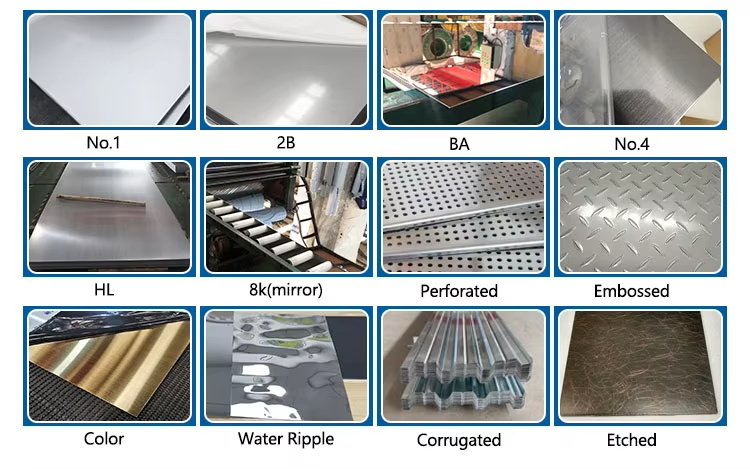304 vs 304L: Understanding the Best Stainless Steel for Your Application
- Emily
- Industry News

Stainless steel is one of the most widely used materials in various industries due to its corrosion resistance, durability, and versatility. Among the different grades of stainless steel, 304 and 304L are two of the most commonly used austenitic stainless steels. While they share many similarities, they also have key differences that make them suitable for specific applications.
This article provides a detailed comparison between 304 (UNS S30400) and 304L (UNS S30403) stainless steel, covering their chemical compositions, mechanical properties, corrosion resistance, weldability, and typical applications. Understanding these differences will help engineers, manufacturers, and designers select the most appropriate material for their needs.

1. Chemical Composition
The primary difference between 304 and 304L stainless steel lies in their carbon content.
Element | 304 Stainless Steel | 304L Stainless Steel |
Carbon (C) | ≤ 0.08% | ≤ 0.03% |
Chromium (Cr) | 18.0–20.0% | 18.0–20.0% |
Nickel (Ni) | 8.0–10.5% | 8.0–12.0% |
Manganese (Mn) | ≤ 2.0% | ≤ 2.0% |
Silicon (Si) | ≤ 1.0% | ≤ 1.0% |
Phosphorus (P) | ≤ 0.045% | ≤ 0.045% |
Sulfur (S) | ≤ 0.03% | ≤ 0.03% |
The most significant distinction is the lower carbon content in 304L. This reduction minimizes carbide precipitation during welding, which can otherwise lead to intergranular corrosion.
2. Mechanical Properties
Both 304 and 304L exhibit similar mechanical properties, but slight variations exist due to differences in carbon content.
Tensile Strength and Yield Strength
Property | 304 Stainless Steel | 304L Stainless Steel |
Tensile Strength (MPa) | 515 – 620 | 485 – 590 |
Yield Strength (MPa) | 205 (min) | 170 (min) |
Elongation (% in 50mm) | 40% min | 40% min |
Hardness and Impact Resistance
Both grades have similar hardness levels (Rockwell B ~70-90).
304 may have slightly higher hardness due to its higher carbon content.
304L offers better impact resistance in cryogenic applications due to its lower carbon content.
304 has slightly higher strength due to its higher carbon content.
304L is more ductile and performs better in low-temperature environments.
3. Corrosion Resistance
Both 304 and 304L offer excellent corrosion resistance in a wide range of environments. However, 304L performs better in environments where welding is involved, especially in corrosive atmospheres. The lower carbon content in 304L reduces the risk of sensitization, a phenomenon in which chromium carbides form along the grain boundaries during welding, depleting chromium and making the steel more susceptible to corrosion.
In high-temperature or aggressive chemical environments, the choice between 304 and 304L can significantly affect the longevity and safety of the equipment.
4. Weldability
Weldability is a critical factor in material selection, especially for fabrication.
304 Stainless Steel
Prone to carbide precipitation in the heat-affected zone (HAZ) during welding.
Requires post-weld annealing to restore corrosion resistance.
Suitable for thin sections where welding heat input is low.
304L Stainless Steel
Excellent weldability due to low carbon content.
No post-weld annealing required in most cases.
Preferred for heavy welding applications (e.g., pressure vessels, pipelines).
304L is the best choice for welding-intensive applications.
304 requires additional heat treatment to prevent corrosion after welding.
5. Applications
Both 304 and 304L are versatile and used in a wide array of industries. The final choice often depends on the specific application requirements.
304 Applications:
Kitchen equipment (sinks, appliances)
Architectural paneling and trim
Heat exchangers
Storage tanks (where welding is minimal)
Automotive parts
304L Applications:
Pressure vessels
Welded structural components
Chemical processing equipment
Pharmaceutical and food processing environments
Marine equipment
In general, 304L is favored in welded constructions and corrosive environments, while 304 is chosen for applications requiring higher strength and less welding.
6. Cost and Availability
The price difference between 304 and 304L is usually negligible since they are produced in large quantities and often available from the same suppliers. However, 304 may occasionally be slightly less expensive due to the lower processing costs associated with its higher carbon content.
Availability for both grades is excellent, with most suppliers stocking sheets, plates, tubes, bars, and custom shapes in both 304 and 304L.
Walmay help you to choose
The price difference between 304 and 304L is usually negligible since they are produced in large quantities and often available from the same suppliers. However, 304 may occasionally be slightly less expensive due to the lower processing costs associated with its higher carbon content.
Availability for both grades is excellent, with most suppliers stocking sheets, plates, tubes, bars, and custom shapes in both 304 and 304L.
Although 304 and 304L stainless steels share many characteristics, understanding their differences is critical for optimal material selection. The choice between them depends largely on whether the component will be welded, the operating environment, and the importance of mechanical strength.
Choose 304 when strength is more critical and welding is limited or can be followed by heat treatment.
Choose 304L when weld integrity and corrosion resistance after welding are priorities, especially in corrosive environments.
In practice, 304L is often used as a substitute for 304 due to its improved weldability, especially since the cost difference is minimal. However, when higher strength is necessary, and corrosion risk is controlled, 304 remains a reliable choice.
Ultimately, the decision should be guided by the specific demands of the application, cost considerations, and long-term performance expectations.
If you have any inquiry, pls contact us freely sale@rylision.com. Whatsapp:+86 13026184819






